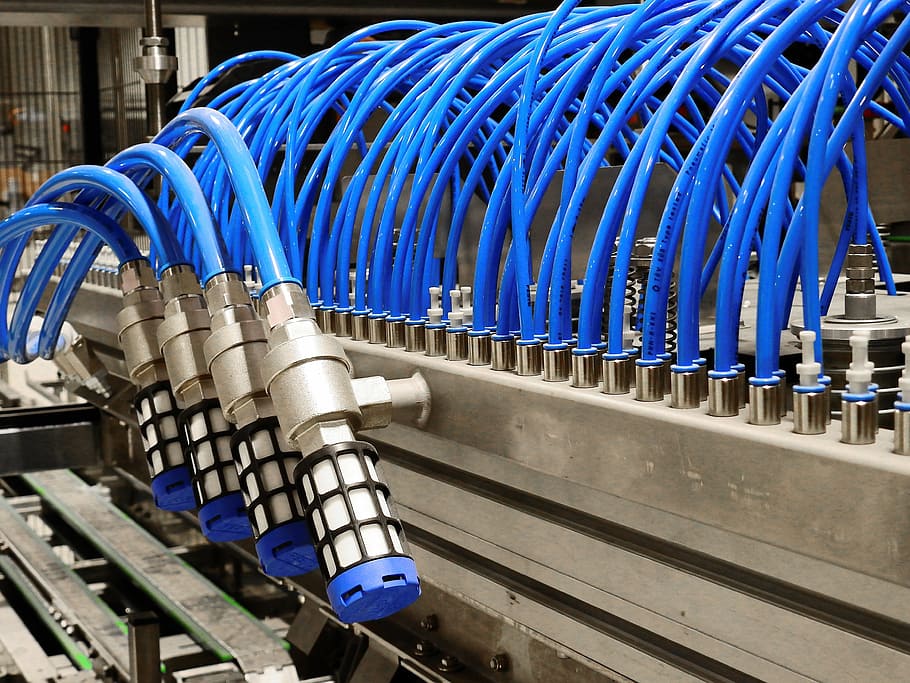Compared to hydraulic and electric systems, the use of compressed air remains the simplest way to transfer power, which is why multiple jobs on the worksite are accomplished using pneumatic systems.
Yet even with the rising demand and popularity for this technology, many users of pneumatic systems are overlooking opportunities to cut back on energy costs caused by inefficiencies. What’s worse, they may not be doing anything to address these inefficiencies because they believe they’re inherent to the system, and thus, require no corrective measures.
The good news is that many common pneumatic inefficiencies in the manufacturing and construction industries can be corrected. And by optimizing these systems, you can lower compressed-air energy consumption by more than a third.
Here are some of the most common pneumatic inefficiencies and how to address them:
Leaks
A lot of business owners associate pneumatic systems with leaks, thinking they happen too often for them to do anything about it. Fortunately, these leaks can easily be remedied or avoided with a few adjustments.
Leaks typically appear first in the seals and valves. As such, it’s important to have the right type of valves for the system. For instance, if an operation does not require an open crossover during valve shifts, then it’s better to use soft seals instead of lapped-spool valves with metal seals. Other factors that cause leakage are temperature, humidity, and lubrication.
Different ways to prevent or fix leaks:
- Use and apply high-quality sealants.
- Look for missed welds in flanges.
- Ensure that o-rings to complete the seals are in place.
- Replace worn packing materials.
- Maintain the tools regularly or replace old ones.
Unoptimized Pressure
Some pneumatic system operators believe that more pressure translates to better performance for tools. The truth is that using more pressure than needed just creates energy inefficiencies.
Fortunately, you can easily stay within the minimum and maximum parameters by installing sensors and pressure regulators. You’ll be surprised at how much you can generate in savings by eliminating excess pressure delivery.
Other ways to optimize pressure:
- Keep the tubing as short as possible.
- Consider buying “smart” regulators that combine digital control devices with specific valves.
- Ensure that operators understand how different tasks require different pressure levels.
Not Regulating the Return Stroke
An actuator’s movement can typically be divided into four phases: start, movement, end, and return stroke. The start and end phases usually require more pressure, while movement and return stroke phases don’t need much pressure at all. Optimizing the motion and reducing hard end position stops can lead to accumulated savings over time.
How to improve return stroke efficiency:
- Use a spring return actuator on single-acting cylinders with shorter strokes.
- Reduce pressure for return strokes to only what is needed.
Keeping Machines On
Something as simple as turning off air to unused machines can help add to your savings. Some elements of the pneumatic system may still require pressure even when the machine is off, but most of them need only a fraction of the usual pressure used during normal operations in this state.
The problem with many installations, however, is that there’s no way to reduce or stop the pressure flowing to idle machines. This can be a significant cause of energy inefficiency, especially if it continues to happen for an extended period.
How to fix this:
- Install an automatic air reduction control package that will lower pressure to just the right levels for turned off machines.
- Have someone manually turn off the air supply to the idle machines to reduce energy costs.
Not Using the Right-Sized Components
While buying smaller and cheaper control valves may seem like you’re saving money at first, doing so will incur you more expenses over time. Air compressors with smaller valves will need to compensate and work harder to reach the right pressure, raising your energy consumption in the process.
Another problem that leads to pneumatic inefficiency is using oversized components. While it’s necessary to go a few sizes larger to cover for fluctuating pressure levels and air losses, ill-fitting components can lead to severe energy losses.
Remember that most loads and speeds need just 25% more capacity to work properly, so you’ll still need to choose the right amount of oversizing if you want to save money.
What to do:
- Use software packages and online calculators to help with component sizing.
- Understand your pneumatic system’s true requirements and stick to those parameters.
Optimizing the performance of your pneumatic system saves you a lot of money
Before, the main focus of businesses was to ensure their pneumatic systems were working — that’s it. They didn’t mind the leaks, oversizing, and constant application of pressure even on unused equipment. But wasting energy is never okay, and it’s never cost-efficient. The good news is that with some adjustments, your plant can expect vast improvements that will dramatically increase your energy savings while maintaining the same level of productivity.

